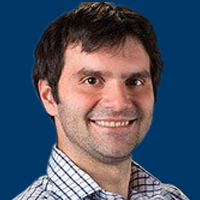Switching Therapy: Secondary Mutations and Resistance
Transcript:
Neeta Somaiah, MD: As you said, you do mutation testing up front. That’s what we do. And I think most patients end up going on imatinib because the responsive KIT tends to be the higher percentage of mutations that we see. But how are you assessing for perhaps secondary mutations or reasons for resistance that you might see with imatinib? Because most patients who have a lot of bulky disease do end up getting resistance or progressing on imatinib after a year.
Jonathan Trent, MD, PhD: That’s a good question. Usually in 2 to 3 years on average, patients do develop some type of resistance. And if you can’t control it with some type of localized approach, and it is in the generalized or widespread progressive setting, then it’s time to look at a new agent. What we do in our practice is we assess circulating tumor DNA as a first step. If a patient has progressive disease, and has tumor size of the 3 largest lesions greater than 10 cm, the probability of detecting mutation by circulating tumor DNA is close to 100%. It’s very high.
We do that as a first approach to understand the landscape of resistant mutations. The most common resistant mutation in that setting is KIT exon 17 secondary resistant mutations. And these mutations are probably preexisting. Treatment with imatinib eradicates the tumor cells….
Neeta Somaiah, MD: Sensitive clones.
Jonathan Trent, MD, PhD: Yes, the sensitive clones that don’t have that mutation. And then the nodules that are enlarging have either exon 17 or exon 13 resistant mutations.
Neeta Somaiah, MD: So either the ATP [adenosine triphosphate]-binding bulkage.
Jonathan Trent, MD, PhD: Precisely.
Neeta Somaiah, MD: This is a very good point about the circulating free DNA analysis, but do you think it’s ready for prime time, or do you think it’s still not ready? I started doing that with my patients who are progressing, and I guess we still don’t know. Because if you do detect the mutations it is very valuable, but I don’t think we’re able to detect circulating. As you said in your research, depending on the bulk of disease or the size of the tumors, there might be a higher probability of actually detecting them. But I think it’s probably not something that is being used widely. And I guess we still need to use it in clinical trials to get more data and see how we can effectively use that data to change treatment.
Jonathan Trent, MD, PhD: Those are all very good points. And there are emerging data, largely laboratory based, and some clinical data, that certain agents—sunitinib and regorafenib namely—that are FDA approved, may be more effective at one of the secondary resistant mutations, for instance, exon 13, and less active against exon 17. Or another agent, another TKI [tyrosine kinase inhibitor], may be active against exon 17 but not exon 13. That certainly would be considered experimental. It hasn’t really been validated in a prospective clinical trial where treatment options are defined or guided by the presence of a secondary resistance mutation.
Neeta Somaiah, MD: But I think what’s becoming clear is, if you do detect mutations in the blood, you get a broader spectrum. You get a better picture of the variety of mutations in different lesions that are present in the patient versus what a tumor biopsy from 1 single location can give. So I think there is more to come on that, but you’re right, exon 13 and exon 17, the most common secondary mutations, will play a role in deciding, hopefully in the future, which drug to pick as your second-line treatment. Because as we have more drugs available, the trick becomes how to sequence these drugs the best; I think those secondary resistance mechanisms will become key in determining which drug we’ll use next.
Trancsript Edited for Clarity



